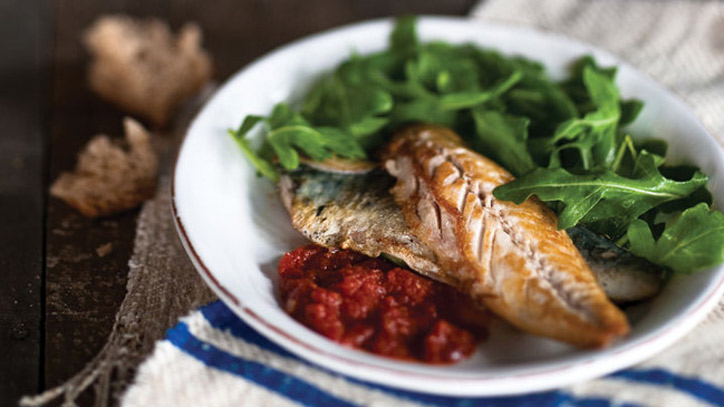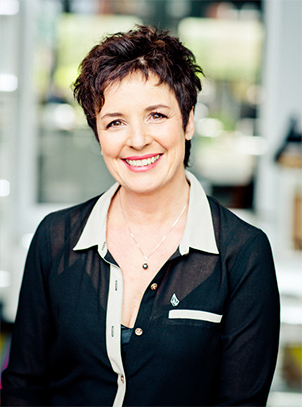Canada’s waterways are brimming with great catches: lobster, snow crab, arctic char, turbot, mackerel, trout and many others. However, a recent study confirms that 78% of Canadian children do not consume the minimum acceptable intake of omega-3 that is recommended to prevent cardiovascular disease and maintain good health.
Left off the shopping list
Fish and seafood can often be found front and centre on special occasions, served during a birthday meal or dinner out in a restaurant. But they do not make it into our weekly shopping cart and are consistently left off the shopping list. Many believe that seafood is expensive... But, according to Statistics Canada (2001), fish and seafood (including canned and frozen products) account for only 3% of the grocery budget, compared to meat which represents 20% of the weekly food budget. Then there’s the fat content. If you replace one meat meal with a fish meal per week, you kill two birds with one stone: you decrease your saturated fat intake and increase your omega-3 intake, an under-consumed unsaturated fat. There are 14 lunches and suppers in any given week. Why not add seafood to the menu more often, especially fish caught locally.
Two is better!
The experts all agree: you should eat at least two servings of fish or marine products each week. The all-new 2009 version of the Mediterranean Diet Pyramid emphasizes the importance of eating fish and seafood on a regular basis, at least two times a week. Even Health Canada, in its recent guidelines on prenatal nutrition (2009), recommends that pregnant women consume 150 g (5 oz) of fish each week, or two small meals of 75 g (2 oz) of cooked fish. The latest edition of Canada’s Food Guide recommends the same thing for adults, with an emphasis on herring, mackerel, trout, sardines, salmon and trout. And fish lovers are more likely to eat a larger amount. So much the better!
A native of the Gaspé, nutritionist and epidemiologist Michel Lucas has long been interested in the benefits of seafood. Lucas is the principal author of a study that looks at the consumption of seafood products by Quebecers compared to international recommendations. He says there is still a long way to go: “Professionals have long been concerned about the low consumption of fish in Quebec. There are good reasons not to eat it: taste, cost, bones, smell while cooking and the rest. But we must eat oily fish at least twice a week.” Lucas has two kids himself. How does he do it? “At home, we plan our weekly menu and always include fish: baked, in a salad, barbecued... it’s easy and works well with our hectic lifestyle. Fish does not take long to prepare. We have a stack of simple recipes to make fish meals during the week. It is good to expose kids to seafood products at a young age. Atlantic salmon is a big hit, of course, but we have work to do to help people discover other species like sardines or mackerel. It is true that their taste is more pronounced. But they are really delicious when well prepared!” declares Lucas, convinced.
What about the contamination?
During the Colloque santé-mer (Health and Seafood Symposium) organized by the Table des Pêches maritimes (Marine Fisheries Table) in Quebec last January, Dr. Éric Dewailly presented the risks and benefits of eating fish. For this doctor specializing in toxicology, fish may be contaminated by naturally occurring toxins (marine contaminants, methylmercury in rocks) and human (PCBs, dioxins, DDT, heavy metals). Dr. Dewailly’s research, however, is reassuring. To reach the established intake limit of mercury, you would have to eat two meals of farmed salmon a day. When it comes to PCBs and dioxins, you would have to eat this fish three times a day which is highly unlikely. “Eating two or three meals of trout or farmed salmon a week poses no health problems,” according to the expert. “On the contrary, fish, shellfish and crustaceans are gifts from the sea filled with many nutrients that are important to our health. And from an ecological point of view, we should eat more small fish like mackerel, herring, sardines or anchovies that are at the bottom of the food chain, rather than make it into fishmeal to feed larger species like tuna and swordfish.
Omega-3
Fatty fish are rich in omega-3 and vitamin D, two under-consumed nutrients. Fatty fish are an important source of vitamin D for a northern population like ours with limited exposure to sunlight, especially when you know that SPF 15 reduces the synthesis of vitamin D by 99%.
Omega-3s are essential fatty acids that the body cannot produce; only 15% of Quebecers consume enough of them! The protective role of omega-3s is well documented: healthy heart and arteries, brain development, immune functions, anti-inflammatory actions (arthritis, asthma...), prevention of breast and bowel cancer, mental health, etc.
Omega-3s in fish have names a mile long that can be summed up by the letters EPA and DHA. These are not the same omega-3s found in plants like flaxseed oil and seeds, canola oil, nuts and foods enriched with omega-3. This is why it is so vital to eat seafood products because the conversion of plant-source omega-3 DHA is practically non-existent with the low rate of 0.1%.
Number of servings (75 g or 2 oz) to eat to meet your omega-3 needs each week:
- Mackerel: 0.8
- Atlantic salmon: 2
- Rainbow trout: 21/2
- Cod: 17
- Haddock: 19
What is a serving of fish or seafood?
Some examples:
- 75 g (2 oz) of cooked fish
- 7 to 11 sushi, depending on the size of the pieces of fish
- 3/4 of a lobster, 454 g (1 lb)
- 1/2 can of canned tuna
- 125 ml (1/2 cup) of prawns or shelled mussels

